These 7 real-life cyborgs show the future of high-tech body modifications
Neil Harbisson

Moon Ribas

A Spanish artist and good friend of Harbisson's, Ribas had a tiny magnetic sensor implanted near her left elbow in 2013. The sensor connects to an online seismograph that picks up earthquakes around the world. When they happen, Ribas' arm vibrates too.
Stronger earthquakes produce stronger vibrations, which she often turns into avant-garde performance art, dancing and swaying at an intensity that matches the strength of the tremor. She calls the added ability her "seismic sense."
"Now I feel like I have two heartbeats," she told Quartz recently. "It's like my own, and an 'Earthbeat.'"
Amal Graafstra
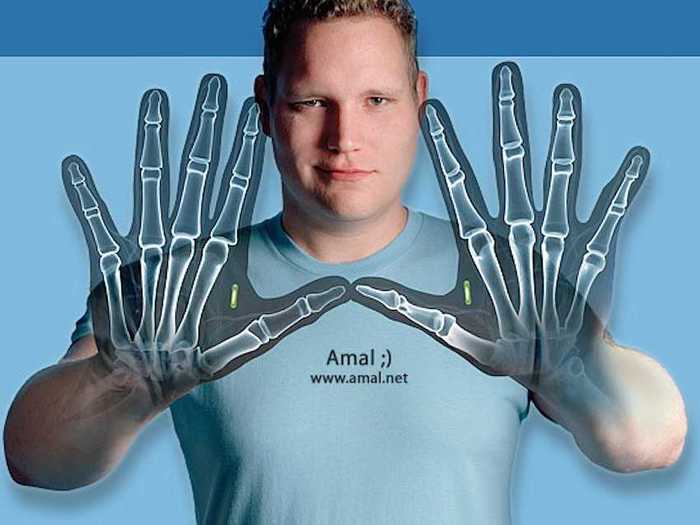
As the CEO of Dangerous Minds, a company that sells kits to help people become cyborgs at home, Graafstra practices what he preaches. He has two radio-frequency identification (RFID) chips embedded in his hands, which he uses to lock and unlock the doors on his house and log into his computer just by scanning his hand.
"We have been picking up things like rocks and sticks forever and used them as tools," Graafstra told Tech Insider last July. "That is nothing new and this is just a natural progression of that. We are just now putting our tools inside of our bodies."
Eventually he hopes to connect the chips to his bank account so he can make transactions without needing his phone or checkbook.
Jens Neumann
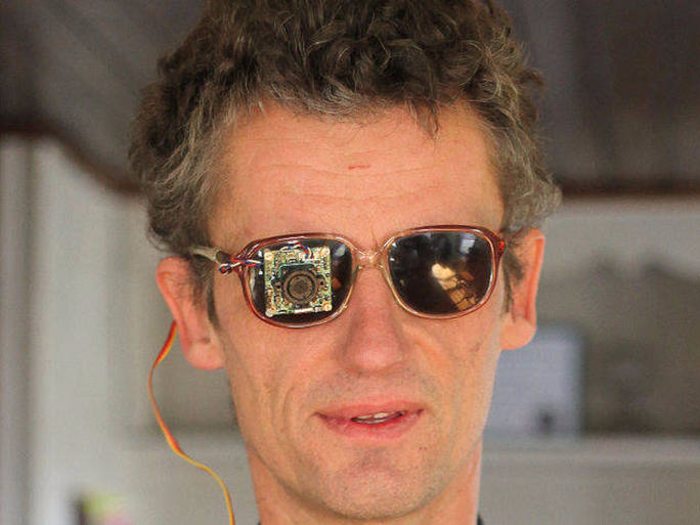
In 2002, Neumann became the first person in history to receive an electronic eye — a revolutionary (though crude) device called the Dobelle Eye. Created by biomedical researcher William Dobelle, the eye consists of a brain implant that's connected to a camera, allowing Neumann — who was blind — to make out distinct lines and shapes.
As futurist Richard van Hooijdonk recently explained, Neumann's electronic eye has led to government-backed research about other uses for brain chip implants, including helping soldiers with mental-health problems. "With this, they hope to be able to provide a solution for brain damage, memory loss or PTSD," he wrote on his website.
More skeptical observers have also suggested it could help soldiers achieve superhuman vision.
Nigel Ackland
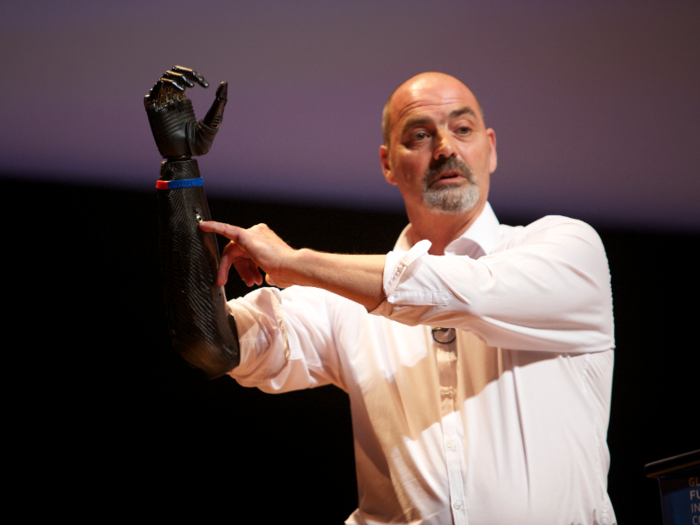
Wired has called Ackland's bionic limb "the future of prosthetics," and for good reason.
After a 2006 injury led to the amputation of his right arm below the elbow, biotech company RSL Steeper outfitted Ackland with its cutting-edge prosthetic device, the bebionic3. Users of the bebionic3 control the device via muscle contractions, with changes in electrical signals near the skin creating movement.
Ackland can perform 14 complex movements with the arm, include pinching his fingers, shaking hands, and even holding an egg. Since receiving it, he has become a vocal advocate for smart prostheses. He says the arm has given him newfound psychological comfort, and he works closely with RSL Steeper to keep making the device better.
Tim Cannon
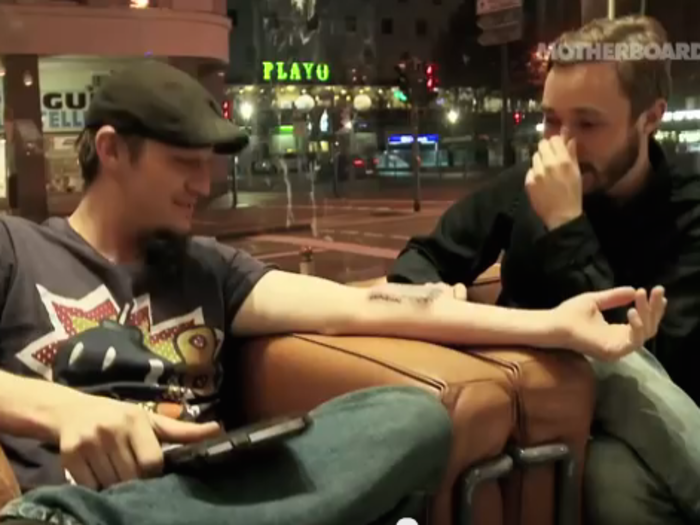
Cannon isn't content to just wear a Fitbit.
In 2013 Cannon had a biometric chip, a product known as Circadia, implanted under the skin in his forearm. It sends data about his movement patterns and heart rate to an Android-powered device.
Cannon told Motherboard in 2013 that his reasons for getting the implant extend far beyond simple curiosity. Cannon wants to eventually hack evolution to make life as comfortable as possible.
"So if, for example, I've had a stressful day," he said, "the Circadia will communicate that to my house and will prepare a nice relaxing atmosphere for when I get home: dim the lights, let in a hot bath."
Jerry Jalava
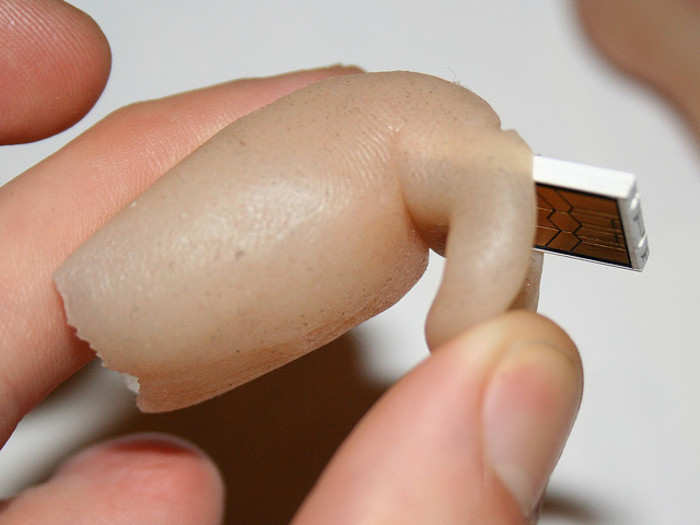
After a 2009 motorcycle accident clipped off the tip of Jalava's left ring finger, the Finnish computer engineer replaced the missing piece with something even handier than a fingertip: a 2GB USB drive.
Now when Jalava needs extra storage, he simply removes the small cap that fits on top of his finger, and plugs it into his computer's USB port.
"First when people saw it they got really horrified," Jalava said in a 2009 interview with Diagonal View. "They just couldn't take it as a joke, so usually they needed a little time before laughing and understanding this is a really funny solution."
Think of it as a tiny second brain that he can hold in the palm of his hand.
Popular Right Now
Popular Keywords
- India’s wearables market decline
- Vivo V40 Pro vs OnePlus 12R
- Nothing Phone (2a) Plus vs OnePlus Nord 4
- Upcoming smartphones launching in August
- Nothing Phone (2a) review
- Current Location in Google
- Hide Whatsapp Messages
- Phone is hacked or not
- Whatsapp Deleted Messages
- Download photos from Whatsapp
- Instagram Messages
- How to lock facebook profile
- Android 14
- Unfollowed on Instagram
Advertisement